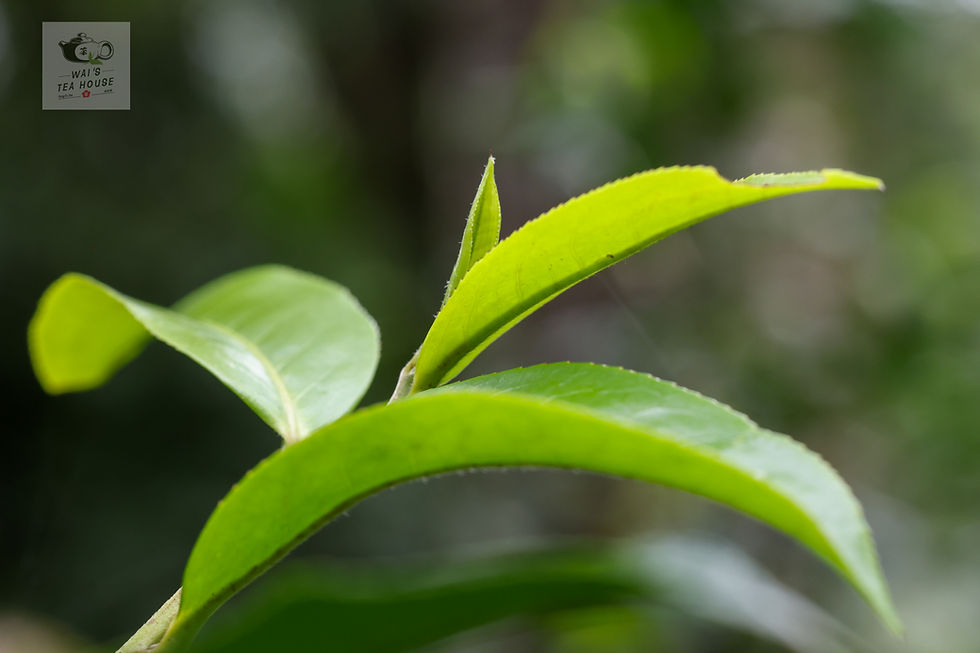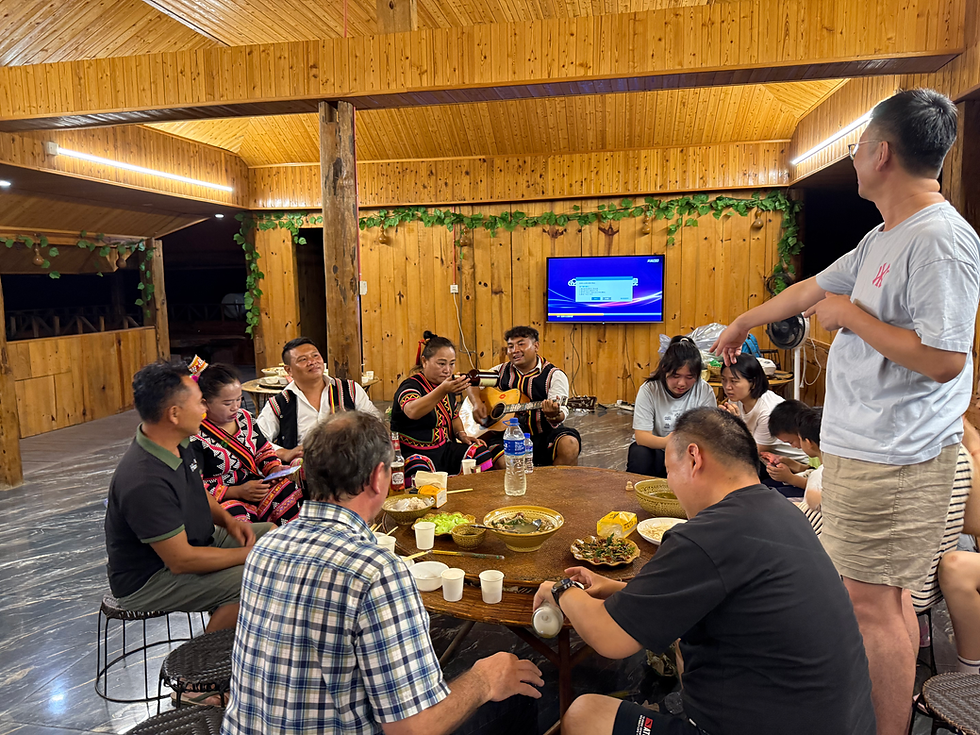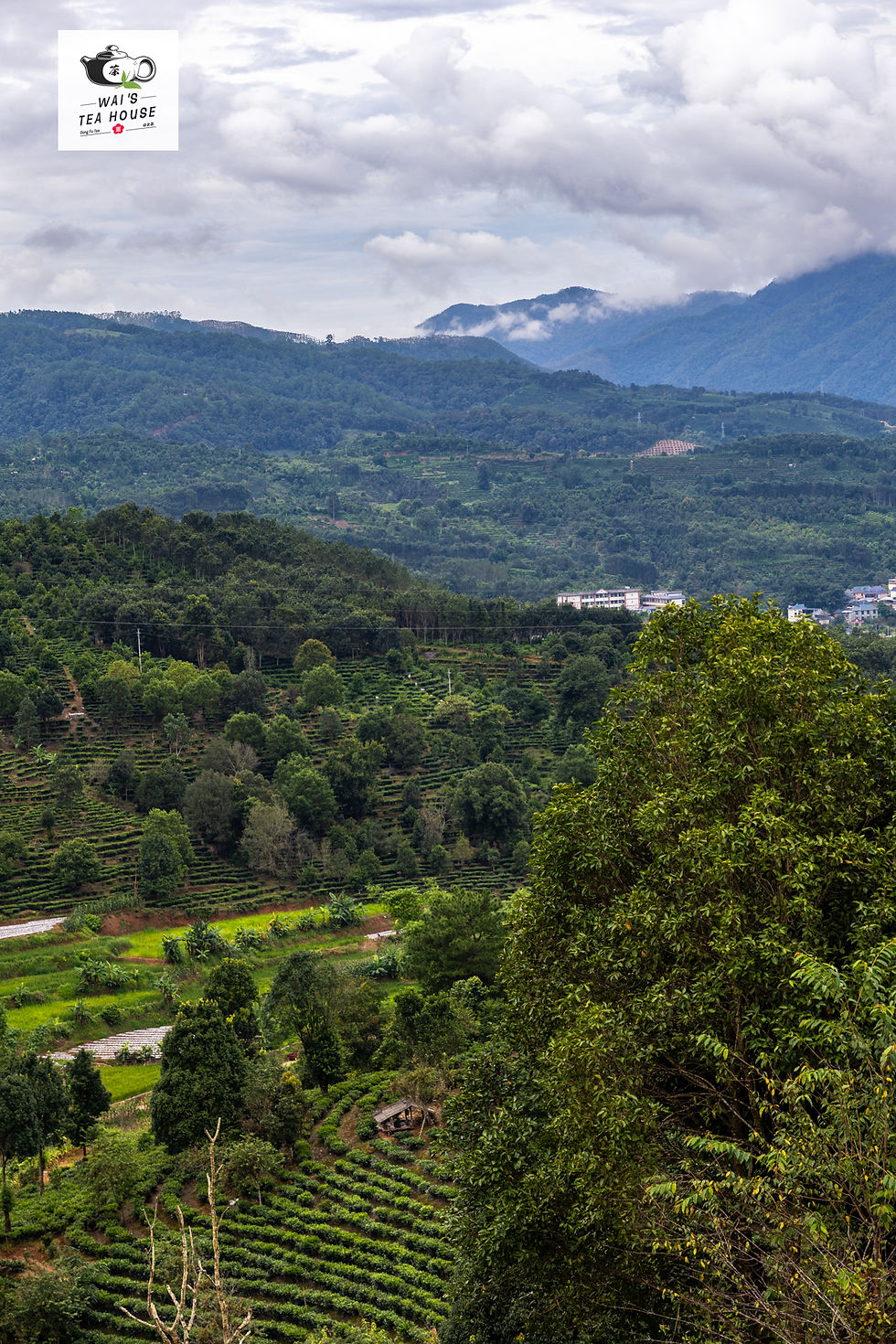Wai’s Tea House - 2025 China Trip
- Wayne Belonoha

- Aug 16
- 12 min read
Updated: Aug 20
HONG KONG
We landed in Hong Kong. What a city. Hustle. Bustle. And great food. We met up with Wing Chun Grandmaster Sunny Tang and explored the city.
GUANGZHOU
From Hong Kong we went over to Guangzhou, a bustling city of 18 million people. Famous for cantonese cuisine. We spent a few days sightseeing and enjoying the city.
WING CHUN TOURNAMENT IN FOSHAN
Then off to Foshan - the home of Patriarch Ip Man - to attend the 2025 International Wing Chun Kung Fu Tournament. Amy entered only one event, the Women’s Compulsory Forms, and earned the 2nd place silver medal. There were 4,000 competitors in the event from around the world and we at Wai’s Kung Fu earned 7 gold medals, 9 silver medals, and 4 bronze medals. Sifu Wayne led the North American team, representing Canada and USA.

When we got to the tournament, we were informed of a new event - the bare knuckle full contact fighting event. How could we turn down such an opportunity. After 2 days of competition, we had earned the silver medal, beating out some of the best full contact fighters on the planet. Great job guys!
Then we went to visit the I- Man Hall in Foshan.

And finally returned home with our bounty of medals.
THE TOWN OF XINHUI (新会)
Nestled in the southern reaches of Guangdong Province lies Xinhui (新会), a historic town that quietly boasts a global influence, holding a unique and revered place in the hearts of tea drinkers and traditional medicine practitioners. This town is world-famous for one thing in particular: chenpi (陈皮) — aged tangerine peel.

Xinhui is celebrated as the birthplace and capital of this prized ingredient. The peel is harvested from the Xinhui dajin mandarin (新会大红柑), a specific variety of citrus grown in the fertile, humid lands near the Tanjiang River. After being sun-dried and meticulously aged for years—sometimes decades—this citrus peel develops an intensely aromatic, medicinal character unlike any other. But Xinhui’s influence doesn’t stop at herbal medicine or improving the flavors of your favorite foods.
Sometimes known as Xiao Qing Gan (小青柑) when using younger green peel, this tea has quickly become a favorite among tea enthusiasts for its:
Digestive benefits (praised in Traditional Chinese Medicine)
Relieves chest tightness, bloating and irritability
Reduces Phlegm and Relives Cough
Improves spleen function
Ability to reduce nausea
Anti-inflammatory and antioxidant effects
Smooth flavor with no bitterness
Uplifting citrus aroma layered over earthy Pu’er tones
Long aging potential, just like pure Pu’er cakes
And recent studies show it contains flavonoids, essential oils and polymethoxyflavones (PMFs) with anti-tumor and lipid-lowering properties
Ability to calm the mind, reduce stress and improve mood
We arrived and went for food! They have a restaurant that serves only local dishes made with local Chengpi. It was delicious, delicately orange flavored chicken, egg tarts and even braised tofu. Amazing food!

After eating we went to visit the Xinhui Chenpi Cultural Museum. It showcases the full cultural and production history of Xinhui Chenpi.
Then we were off to visit our friends’ chenpi tea shop. They have a small farm nearby that produces some of the world’s best chenpi, with prices of 20 year aged orange peel reaching a staggering $1,000 per gram. For two hours we tried many the different grades and styles. It was an amazing experience. And honestly, I’m fully sold. Chenpi really lives up to the hype.

Then we had the chance to move into the tea side of the shop where they sell Pu’er tea packed into Chenpi rind. What an amazing combination. The best teas packed into fragrant orange peel. We sat and drank different Pu’er teas and different chanpi rind tisane for the whole day.
In recent decades, tea artisans from Yunnan, the birthplace of Pu’er tea (普洱茶), began combining their rich, earthy fermented teas with the bright, pungent character of Xinhui chenpi. The result? One of the most popular and innovative tea infusions of the modern era: chenpi Pu’er tea (陈皮普洱茶).
At one point some customers overwhelmed the shop and they asked Amy and I to fill in to lead the tea brewing service. Chenpi infusion and Chenpi Pu’er are brewed in the Gongfu style so we were fully acquainted with brewing and serving.
After our Chenpi Pu’er, we were off to the farm where they grow, process and dry the orange skins.
Ask to savor this amazing combination - Chenpi Pu’er.
We walked through old town to dinner with the locals. Then pack. Then we’re off to YunNan Province - the home of the city of Pu'er and the source of Pu’er Tea. I’m writing this using WiFi on the high speed train - it travels at only 250 km/h (160 mph) so we will be there in 9 hours.
KUNMING CITY, YUNNAN PROVINCE
Known as the Spring City because of it's consistent climate - not too humid, not too dry, not too hot, not too cold. Perfect for aging Pu'er Teas.
KUNMING CITY JADE MARKET
We started with the Jade market. They take rare pieces of jade and turn them into magnificent works of art.

Then off to the Yunnan Tea Culture Museum. In the museum they showcased the gong fu tea sets from each dynasty, dating back 2,000 years. They also had a very interesting statue of how pu'er tea was transported by horseback.
YUNNAN TEA CULTURE MUSEUM, KUNMING CITY


Translation:
The map illustrates major sections of the ancient Tea-Horse Road in and out of Yunnan province, connecting regions such as:
Pu'er, Jingmai, Menghai, Xishuangbanna, Lincang, Dali, and Lijiang, extending toward Sichuan, Tibet, and beyond to India, Southeast Asia, and even Europe via caravan routes.
Yunnan has a long-standing history of tea cultivation and trade. Since the distant Han and Tang dynasties, an ancient and rugged route—known as the Ancient Tea-Horse Road—formed between China’s Yunnan, Sichuan, and Tibet regions.
Originating in the tea-producing areas of Yunnan, this route used pack horses and mule caravans to carry tea over mountain ranges. It passed through the southern slopes of the Himalayas toward southern Tibet, southeast Asia, western Asia, and as far as Europe and Africa, connecting ancient civilizations across continents.
The Han and Tibetan peoples—bound by the hardships and mutual trade of the Tea-Horse Road—developed a deep brotherhood. The men and women who braved this path carved its memory into history with their perseverance and the unbreakable spirit.
YUNNAN KANGLE TEA MARKET
Yunnan Kangle Tea Culture City spans nearly 250 mu (around 14 acres) and hosts about 800 merchants, making it one of southwest China’s primary tea trading hubs, especially for Pu'er tea. It features a comprehensive array of facilities including a tea auction center, famous tea museum, tea shops, tea art performance halls, calligraphy and painting exhibitions showcasing tea culture, tea art training and certification, as well as publication and distribution of tea-related products.
While at the market, we visited some of our factories' shops to hang out with old friends, make new ones, and sample some new up and coming teas. We must have tried new teas from 20 farms. For 6 hours we sat and drank tea steady. So many flavors! We drank mostly sheng pu'er teas - some aged, some new - and some freshly made from 1,000 year tea trees. A great experience!
YUNNAN TEA FACTORY
The next day we were off to the tea factory where they press the aged pu'er tea leaves into tea cakes, package and ship. Here's what goes on...

Dried tea leaves arrive at the factory in large bags. They are put into boxes and aged. Kunming has the perfect climate for aging tea leaves. It's called the Spring City because it's always like spring time. Not too hot or cold, not too humid or dry.




















Come buy one of our tea cakes - Wai's Kung Fu Brand Sheng Pu'Er 2013
And that's how Pu'er cakes are made, branded, stored and shipped. It was a long day. As a side note, the place smelled fantastic. And to add to the experience, we sat all day and drank these fantastic teas with the owner of the factory. We talked about the business of tea, tea qualities and the grading process and so much more!

SHILIN STONE FOREST
The next day we took a short trip to the amazing ShiLin Stone Forest. An amazing place of aged beauty.
The Shilin Stone Forest (石林) is a spectacular karst landscape located in Yunnan Province, China, approximately 90 kilometers southeast of Kunming. This UNESCO World Heritage Site is renowned for its towering limestone formations that resemble a dense forest made of stone, hence the name “Stone Forest.” Formed over 270 million years ago during the Permian period, the unique geological formations were sculpted by wind and water erosion, creating dramatic spires, pinnacles, and caverns.
Covering more than 400 square kilometers, the Stone Forest is divided into several sections, including the Major Stone Forest (大石林), Minor Stone Forest (小石林), Naigu Stone Forest (乃古石林), and the picturesque Zhiyun Cave.
Visitors can explore winding paths through the stone towers, enjoy traditional performances, and learn about the region’s ethnic heritage. The Shilin Stone Forest is not only a geological wonder but also a deeply cultural and mythological site, making it one of the most iconic and visited destinations in Yunnan.






After ShiLin, we were off to Jing Mai mountain. Jing Mai is the top producing pu'er region with a forest of ancient 1,000 year tea trees.
JINGMAI MOUNTAIN & TEA REGION
We stayed at the top most hotel on the top most point of the top most mountain in Jing Mai. We arrived in time to catch the sunset over this stunning vista. One can literally sit here for hours and watch the clouds come and go, raise and lower, get thinner and denser. The view is never the same for very long.
We sat on the upper level where there was - of course - a gong fu tea table. We sat with the proprietor of the hotel and tried all the best teas from the region. He offered to share and sell us some of his extra rare teas made from ancient tea tree forest.
Here are some photos of the sunset that were captured from our balcony. (yes there are tea farms and tea forests down there)








The next morning, I was up and ready to take photos of the sunrise. But alas, we were too high up and were actually in the clouds. The air was cool and damp but smelled so fresh and relaxing. It was quite the experience just to stand in the clouds. Here was the view...

But we were in luck! The clouds started to lift and soon we could see the peaks of the other mountains and some spectacular sights!! I took some photos :)










After breakfast, we were off to the tea forest. In the tea forest, the tea plants are allowed to grow into full trees along side other natural plants and wildlife. We were allowed to help collect some of the tea leaves that were ready.

















Jing Mai Mountain Ancient Tree Forest


千年古树茶 — Thousand-Year-Old Ancient Tree Tea
Category: Thousand-Year Ancient Tree TeaOrigin: This plot is located in the Da Ping Zhang core production area of Bingdao, Mengku, Lincang. The ecological environment is excellent, with an altitude of 1,400 to 1,800 meters. The tea leaves are rich in wild mountain energy, with strong orchid fragrance and a long, sweet finish.
Description:The landowner of this ancient tree tea garden holds 37 certified ancient tea trees, some over 240 years old. These trees have never been subjected to pruning or pesticide treatment. The tea leaves are processed entirely through traditional handcrafting. The dry leaves are dark and glossy, the tea soup is clear with golden brightness, and the aroma is elegant and persistent. The taste is thick and mellow, with returning sweetness and saliva stimulation. After drinking, there's a powerful energy rising from the throat and chest, and the body warms from the inside.
After picking our teas, we went to the processing area where they dehydrate the leaves and pack them for shipping to the factory. Here are some of the huge fire fed woks that are used in the drying process. They say that during picking season they have these running 24 hours a day.

LANCANG TEA REGION, PU'ER CITY, YUNNAN
I had the privilege of spending time in Lancang Lahu Autonomous County, and as a lover of Pu’er tea, I can say it was a very profound tea experiences. Nestled deep in Yunnan’s southwest mountains, Lancang isn’t just beautiful—it’s alive with ancient tea culture. I visited remote tea villages like Jingmai, where I walked beneath the canopy of thousand-year-old tea trees and sat with families who’ve been hand-processing Pu’er for generations. The connection between the land, the people, and the tea here isn’t something you read about—it’s something you feel with every breath and every sip.
What makes Lancang truly unforgettable for a tea lover is how pure and authentic the experience is. The tea itself—especially the sheng Pu’er—has a floral clarity and energy that you can’t fully appreciate until you’ve had it at the source, brewed by the very people who picked and crafted it. I was lucky to visit during the harvest season and even helped with leaf-picking. I learned how the Lahu, Dai, and Hani people live in harmony with the ancient tea forests, and how their cultural rituals are intertwined with the spirit of tea. Lancang isn’t just a place where Pu’er tea comes from—it’s a place where tea still lives and breathes, just as it has for centuries. For any serious tea drinker, visiting Lancang feels like coming home.

We sat and sang traditional songs with the locals, enjoyed stories, and ate delicious local food. It was a great experience that truly did feel like coming home.
Our hotel was a spacious two story unit tucked high into the mountainside, a wonderful merge that allowed one to live in the forest high above the tea farms.



In the morning, we walked down to meet with our new friends from the night before and get up close and personal with their ancient tea farms.





MENGHAI, YUNNAN
The next day, we drove to Menghai.
For anyone who loves Pu’er tea, it truly feels like standing at the source of something sacred. Nestled in the southern part of Xishuangbanna, Menghai is surrounded by legendary tea mountains—Lao Banzhang, Bulang, Nannuo, and others—each with their own personality, history, and unique flavor profiles. There’s something deeply grounding about being among these ancient ethnic communities who have lived with pu'er tea for generations.
What makes Menghai especially meaningful is not just the land, but its role in shaping modern Pu’er culture. Visiting the Menghai Tea Factory, Menghai Pedestrian Street and Menghai Tea City, home to the iconic Dayi brand, gave me insight into how the area helped define both sheng (raw) and shu (ripe) Pu’er as we know them today. Tasting fresh maocha at its origin, learning the distinctions between mountain terroirs, and sharing meals with local tea farmers made it all personal. Menghai isn’t just a place on the map—it’s a living archive of Pu’er wisdom, and a place I now carry with me in every cup I brew.
(Maocha (毛茶) refers to the unfinished, raw tea leaves that have been processed just enough to be stored, sold, or aged, but not yet pressed into cakes or fully refined. It literally means “fuzzy tea” or “rough tea,” referring to the fine downy hairs [trichomes] often seen on fresh, young leaves—especially in high-quality Pu'er and white teas.)
MENGHAI PEDESTRIAN STREET

This is me standing at the entrance to Menghai Pedestrian Street (勐海步行街)—and if you’re a Pu’er tea lover, this place is overwhelming in the best possible way. I spent hours here, wandering through a maze of hundreds of tea shops, each one packed with tea cakes, maocha, and locals ready to sit down and brew a few rounds. What struck me wasn’t just the number of vendors (easily over 300), but how specialized they were—some focused on a single village or mountain, like Lao Banzhang or Bulangshan, and could trace every cake to a specific family plot.
You don’t come here just to buy tea—you come to taste, to ask questions, to learn. Shop owners invited me in like an old friend, poured me tea from 30-year-old cakes, and explained the story behind each batch. Whether you’re here to find a rare ancient tree tea or just to immerse yourself in the culture of Menghai, this street is the heartbeat of the Pu’er tea world. I left with a bag full of tea and a head full of stories.
We visited some of our suppliers and spent a wonderful hour sampling some great teas and catching up.

MENGHAI TEA CITY

Menghai Tea City is the beating heart of Pu’er tea commerce in southern Yunnan. Located right in Menghai County—a region legendary for its ancient tea trees and iconic mountains—this sprawling tea market is home to hundreds of vendors, ranging from family-run stalls to established brands. Walking through its halls, you’ll find everything from fresh maocha and aged cakes to rare gushu teas sourced from nearby villages like Lao Banzhang, Bulangshan, and Nannuo. Tastings are everywhere, and conversations with producers often turn into mini tea lessons. For anyone seeking a deep dive into the world of Pu’er, Menghai Tea City is a must-visit destination where business, tradition, and tea culture all converge.
From there, we were back to Hong Kong and home.
See you all again soon!

Note: I'm going to add a few more pictures once I get them from my phone so watch for updates to this blog.


















































































Comments